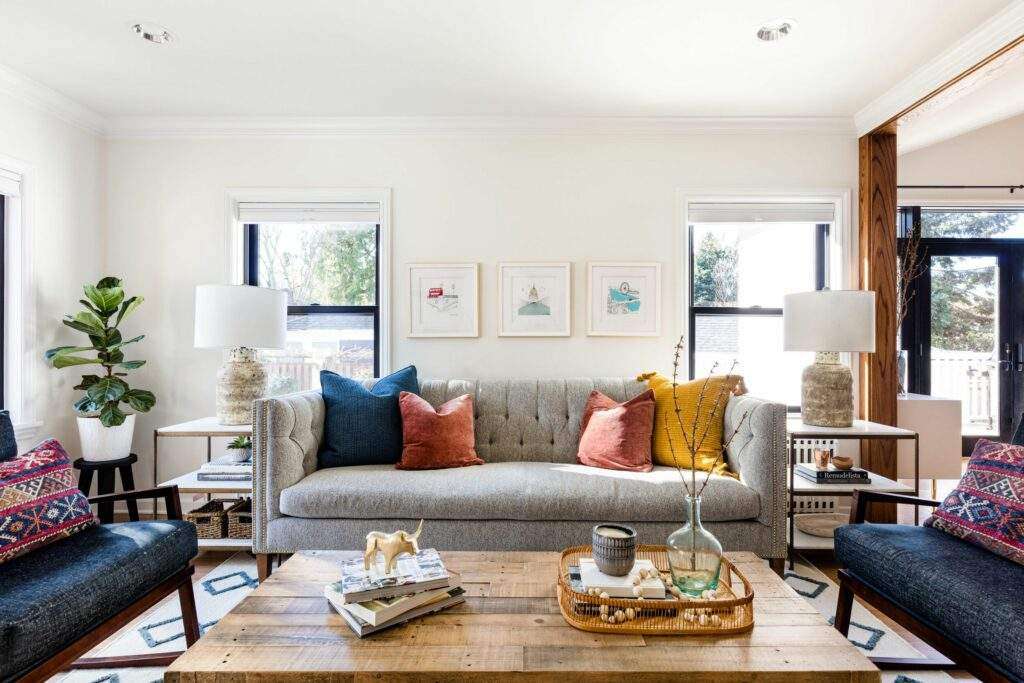
When it comes to maximizing the space in your small living room, furniture arrangement plays a crucial role. The right layout can make your room feel more spacious, functional, and inviting. In this article, we will provide you with five valuable tips on how to arrange your furniture in a small living room effectively. Whether you’re entertaining guests or spending a cozy night in, these tips will help you create a comfortable and stylish space that you’ll love to spend time in.
- Measure and Plan
Before you begin rearranging your furniture, it’s essential to measure the dimensions of your living room. This step will help you determine the size and scale of the furniture that will fit comfortably in your space. Take note of any architectural features, such as windows, doors, or outlets, as these will influence your furniture placement decisions.
Once you have your measurements, create a floor plan using design software or even a simple pen and paper. Visualizing the layout will give you a clear understanding of how your furniture will fit together and allow you to experiment with different arrangements without heavy lifting.
- Prioritize Essential Pieces
In a small living room, it’s crucial to prioritize essential furniture pieces that serve both functional and aesthetic purposes. Start with your largest piece of furniture, such as a l shaped sofa or sectional, and position it against the longest wall. This will create a focal point and establish the primary seating area in the room.
Next, consider the placement of other key elements, such as coffee tables, media consoles, and accent chairs. These pieces should complement the main seating area without overcrowding the space. Remember, less is more in a small living room, so choose furniture that serves multiple functions and offers storage solutions.
- Embrace Multifunctional Furniture
Multifunctional furniture is a game-changer in small living rooms. Look for pieces that can serve dual purposes to maximize space utilization. For example, opt for a coffee table with hidden storage compartments or a sofa that can convert into a sleeper for accommodating overnight guests.
Consider investing in ottomans or poufs that can double as seating or additional storage. These versatile pieces can be easily moved around the room to provide extra seating when needed. By embracing multifunctional furniture, you’ll create a flexible and adaptable space that meets your various needs.
- Utilize Vertical Space
In a small living room, it’s essential to make the most of every available inch, including vertical space. Take advantage of your walls by incorporating tall bookshelves or wall-mounted storage units. These vertical elements not only provide additional storage but also draw the eyes upward, creating an illusion of height and making the room appear more spacious.
Another clever trick is to hang curtains closer to the ceiling rather than just above the windows. This technique gives the impression of taller windows and allows more natural light to enter the room, further enhancing the sense of openness.
- Create Zones and Flow
To ensure a well-organized and harmonious small living room, create distinct zones and establish a smooth flow between them. Define different areas for lounging, dining, and entertaining, even if they’re all within the same space. Use area rugs or furniture placement to delineate these zones visually.
Arrange your furniture in a way that promotes easy movement and avoids blocking natural pathways. Consider leaving ample space between pieces to prevent a cramped feel. By establishing clear zones and maintaining good flow, you’ll create an inviting and functional living room that feels larger than its actual size.
Conclusion
Arranging furniture in a small living room requires careful planning, creativity, and consideration of the available space. By measuring and planning, prioritizing essential pieces, embracing multifunctional furniture, utilizing vertical space, and creating zones and flow, you can optimize your small living room to its fullest potential.
Remember, the key is to balance functionality and aesthetics while keeping in mind the unique challenges of a small space. By following these five tips, you’ll transform your small living room into a stylish and comfortable oasis that reflects your personal style and caters to your everyday needs.

